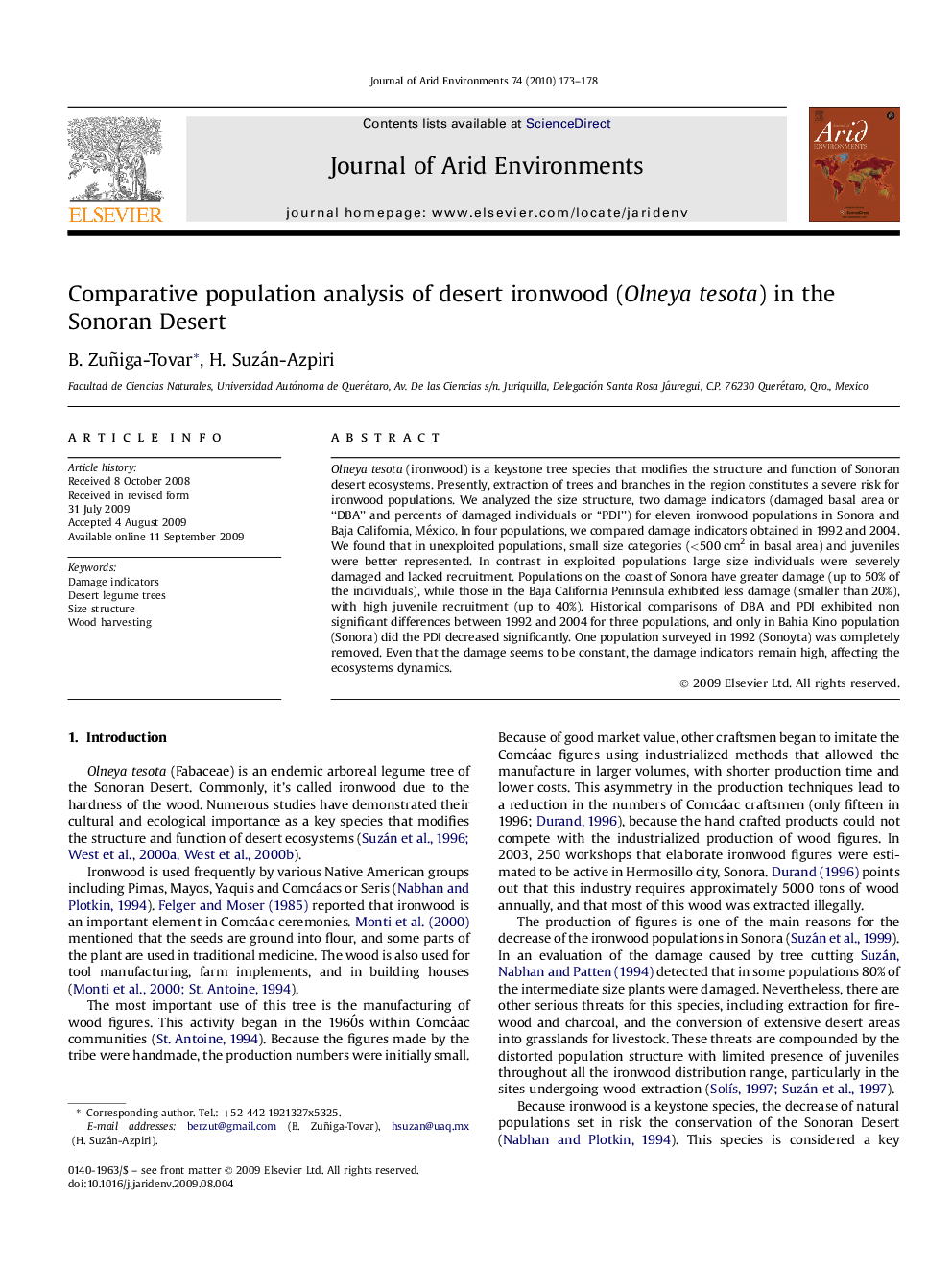| Article ID | Journal | Published Year | Pages | File Type |
|---|---|---|---|---|
| 4393897 | Journal of Arid Environments | 2010 | 6 Pages |
Olneya tesota (ironwood) is a keystone tree species that modifies the structure and function of Sonoran desert ecosystems. Presently, extraction of trees and branches in the region constitutes a severe risk for ironwood populations. We analyzed the size structure, two damage indicators (damaged basal area or “DBA” and percents of damaged individuals or “PDI”) for eleven ironwood populations in Sonora and Baja California, México. In four populations, we compared damage indicators obtained in 1992 and 2004. We found that in unexploited populations, small size categories (<500 cm2 in basal area) and juveniles were better represented. In contrast in exploited populations large size individuals were severely damaged and lacked recruitment. Populations on the coast of Sonora have greater damage (up to 50% of the individuals), while those in the Baja California Peninsula exhibited less damage (smaller than 20%), with high juvenile recruitment (up to 40%). Historical comparisons of DBA and PDI exhibited non significant differences between 1992 and 2004 for three populations, and only in Bahia Kino population (Sonora) did the PDI decreased significantly. One population surveyed in 1992 (Sonoyta) was completely removed. Even that the damage seems to be constant, the damage indicators remain high, affecting the ecosystems dynamics.
